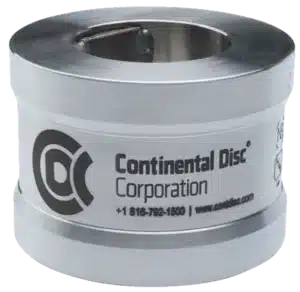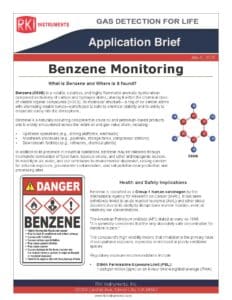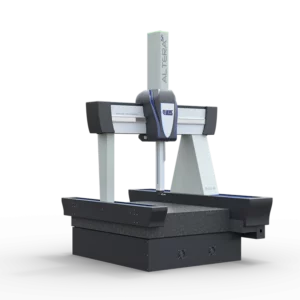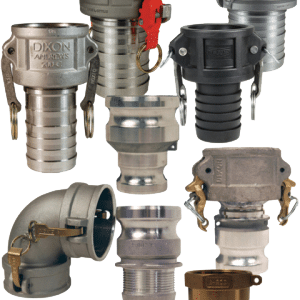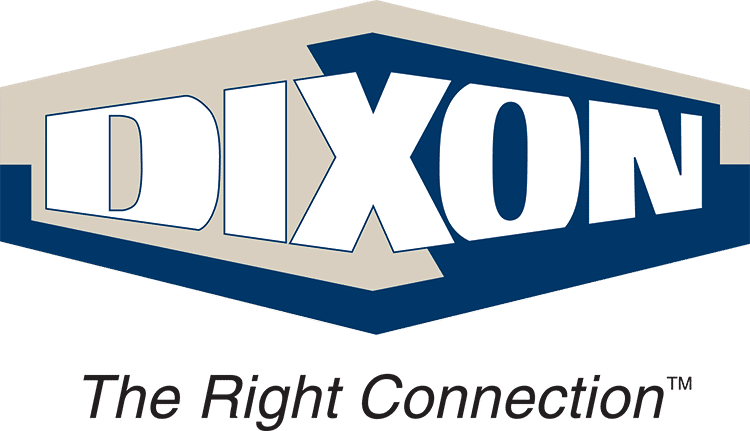Chris Hardy
Normalizing Fuel with Steam Flow
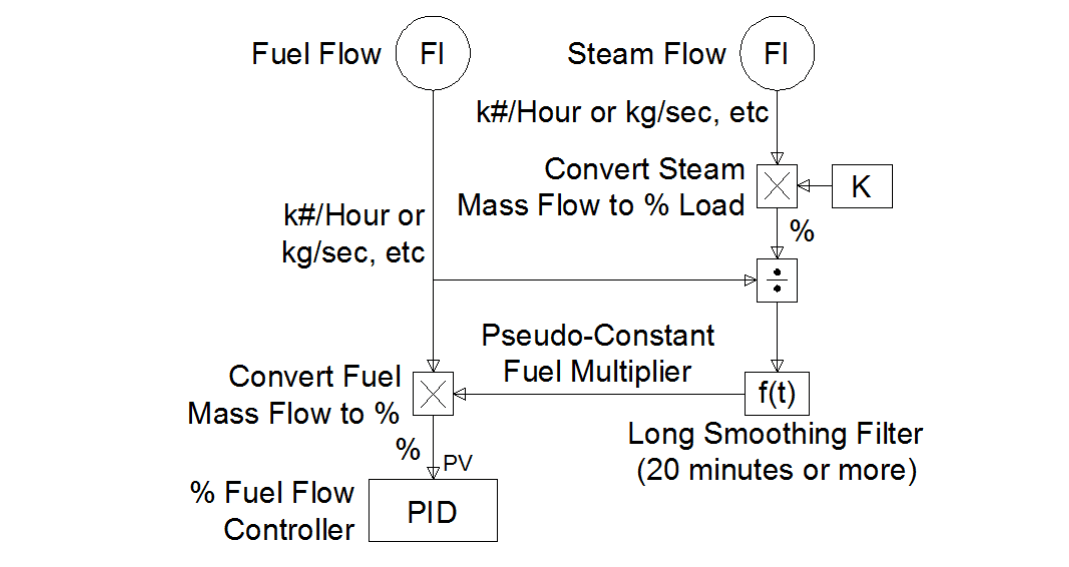
Back in “How Do Burner Combustion Control Systems Work?” I wrote, “So we convert fuel flow to % by multiplying it by a constant.” That is the best way to normalize fuel flow when the fuel is consistent and the mass flow is properly measured – so for #2 diesel oil, natural gas, or propane, just use a constant.
However, for fuels with inconsistent heat values, or where you can only measure volumetric flow and the density varies significantly, you may get a significantly different heat rate for the same fuel flow rate. This is problematic because the amount of air needed is based on heat rate, not flow rate.
One elegant way of overcoming this problem is by normalizing the fuel flow % with steam flow %: divide steam flow % by fuel mass flow and run that ratio through a very long filter (>20 minutes). Ideally the filter should only update when both steam and fuel flows are significantly above zero.
Cross-Limiting with a Deadband
With the standard cross-limiting scheme (for reference: How Do CCSs Work?), O2 will be higher than the trim SP after a significant load change in either direction (this is more desirable than low O2!). Also, flow PVs (especially air) typically jump around and this causes the SPs to jump around. The fuel flow is frequently bumped down under the boiler master due to measurement noise rather than an actual air deficit.
To avoid that problem, while retaining the safety benefit of cross-limiting, I prefer the modified cross-limiting scheme in this diagram: The air flow SP is the greater of the boiler master and the fuel flow PV % minus 1%, and the fuel flow SP is the lesser of the boiler master and the air flow PV % plus 1%. That 1% “deadband” allows the fuel to briefly run up to 1% ahead of the air, which is not nearly enough to cause an explosive situation. As the air flow PV bounces around ±1% of SP, the fuel flow will remain steady. A small signal filter on air flow is also helpful.
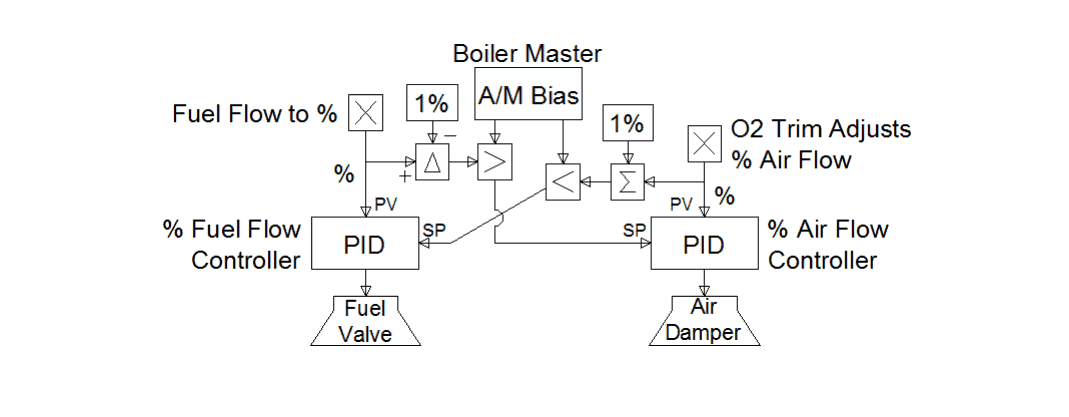
Setting the FAR PWC on the Fly
The conventional way to set the FAR curve (for reference: How to Tune CCSs) is to run the system from minimum to maximum with air and fuel flows in manual. If the system has been tuned before, there are advantages to leaving those loops in auto with the O2 trim centered in manual and the boiler master in manual. You can hit precise intervals quickly and easily since the fuel flow PID will do the valve adjusting for you, and the air flow PID loop can make fine air adjustments. The downside is that this can introduce oscillations into the system which would not exist in full manual.
With this method, each time you move to an interval, you set the Y for the PWC to that interval’s fuel flow %, and the X for the required air flow in mass flow units. If the O2 settles below the target, you increase the X so that the air flow loop adds more air. When the O2 is settled near the target, you move on the next increment.
When the PWC adjustment is complete at maximum load, run it back down to minimum and complete the FAR tuning as the conventional section describes.
Raise and Lower Inhibits
Raise-Inhibits stop the boiler from increasing load when doing so will likely result in a trip. This may result in a small steam pressure slump, but that is preferable to the sudden, large slump that follows a trip at high load!
A raise-inhibit is the inhibition of a PID or A/M/Bias block from raising its output when a discrete external condition exists. For example, you should raise-inhibit the boiler master when the BFW valve is open more than 95%. Unlike alarms, these conditions do not need delays – they do not cause a drastic action but rather just prevent load from increasing further.
Suggested raise inhibits:
- Inhibit the boiler master if:
- The BFW valve is >95%,
- The Air Flow PID SP has reached its maximum limit,
- The Air Flow PID output has reached its maximum limit,
- The Fuel Flow PID SP has reached its maximum limit, or
- The Fuel Flow PID output has reached its maximum limit.
- Any other limits such as windbox pressure, furnace pressure, temperatures, etc…
- Inhibit the plant master if all of the boiler masters in auto are either inhibited or at maximum.
- Inhibit the 3-element drum master level PID loop output if the slave flow loop output is at max.
You should lower-inhibit the O2-trim PID loop any time the air is at its minimum (either SP or output). You can read more about inhibits and runbacks in Advanced PID Loop Tuning.
Conclusion
Oil and gas burner CCSs use the same blocks as any other process control configuration, but arranges them in some unusual ways so that the boiler master, fuel flow and air flow all match as percentages, which makes cross-limiting easier.
O2 at the furnace exit is a critical measurement – it is used to maintain a proper FAR under different conditions.
Make sure you have everything ready to tune a CCS before starting. Then, run the burner from minimum to maximum in manual and capture the data. Use that data set the FAR PWC curve and the output device curves. Once those curves are set, run the burner back down to minimum with everything but the boiler master in auto to check the curves. That is also a good time to adjust PID loop tuning.
Add a deadband to the cross-limiting logic to help stabilize fuel flow and boiler load. Burners using inconsistent fuel may benefit from automatically normalizing fuel and steam flow %. Rise-inhibit loops when limits have been reached to avoid unnecessary trips.
First, last, and always, work safe! Don’t take unsafe shortcuts!



